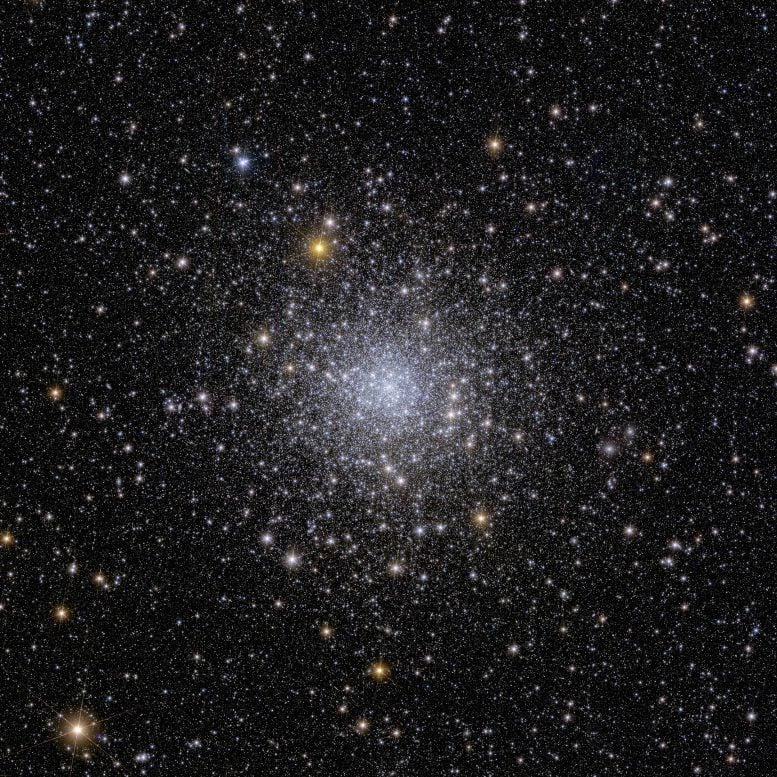
Euclid has captured a comprehensive image of the NGC 6397 globular cluster, located in the Milky Way’s disc and containing stars that offer insights into the galaxy’s history. Observing the entire cluster, especially the faint stars in its outer regions, has been a challenge for existing telescopes. Euclid’s capabilities, however, allow it to distinguish these faint stars, enabling the search for ‘tidal tails’ that can indicate past interactions and help map dark matter within the Milky Way. Credit: ESA/Euclid/Euclid Consortium/NASA, image processing by J.-C. Cuillandre (CEA Paris-Saclay), G. Anselmi, CC BY-SA 3.0 IGO
Euclid’s detailed imaging of the NGC 6397 globular cluster may reveal tidal tails and offer new insights into dark matter’s role in the Milky Way, as well as the evolution of one of the galaxy’s oldest stellar structures.
Capturing the Sparkle of NGC 6397
This sparkly image shows Euclid’s view on a globular cluster called NGC 6397. Globular clusters are collections of hundreds of thousands of stars held together by gravity.
Located about 7800 light-years from Earth, NGC 6397 is the second-closest globular cluster to us. Together with other globular clusters it orbits in the disc of the Milky Way, where the majority of stars are located.
Unveiling the History Through Stars
Globular clusters are some of the oldest objects in the Universe. That’s why they contain a lot of clues about the history and evolution of their host galaxies, like this one for the Milky Way.
The challenge is that it is typically difficult to observe an entire globular cluster in just one sitting. Their centers contain lots of stars, so many that the brightest ‘drown out’ the fainter ones. Their outer regions extend a long way out and contain mostly low-mass, faint stars. It is the faint stars that can tell us about previous interactions with the Milky Way.
The Unique Capabilities of Euclid
“Currently no other telescope than Euclid can observe the entire globular cluster and at the same time distinguish its faint stellar members in the outer regions from other cosmic sources,” explains Euclid Consortium scientist Davide Massari of the National Institute for Astrophysics in Italy.
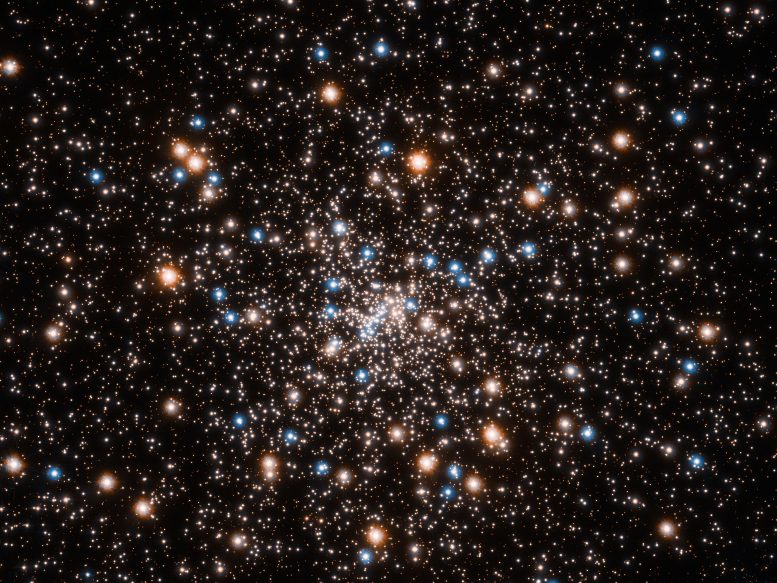
This ancient stellar jewelry box, a globular cluster called NGC 6397, glitters with the light from hundreds of thousands of stars. Astronomers used the NASA/ESA Hubble Space Telescope to gauge the cluster’s distance at 7,800 light-years away. Credit: NASA, ESA, and T. Brown and S. Casertano (STScI), Acknowledgment: NASA, ESA, and J. Anderson (STScI)
For example, the Hubble Space Telescope has observed the core of NGC 6397 in detail (see image above), but it would take a lot of observing time with Hubble to map the outskirts of the cluster, something Euclid can do in just one hour. ESA’s Gaia mission can track the movement of globular clusters, but can’t tell what’s going on with very faint stars. And telescopes from the ground can cover a larger field, but with a poorer depth and resolution, so they can’t distinguish the faint outskirts entirely.
Searching for Tidal Tails
Davide and his colleagues will use Euclid to search for ‘tidal tails’ in globular clusters: a tidal tail is a trail of stars that extends far beyond the cluster because of a previous interaction with a galaxy.
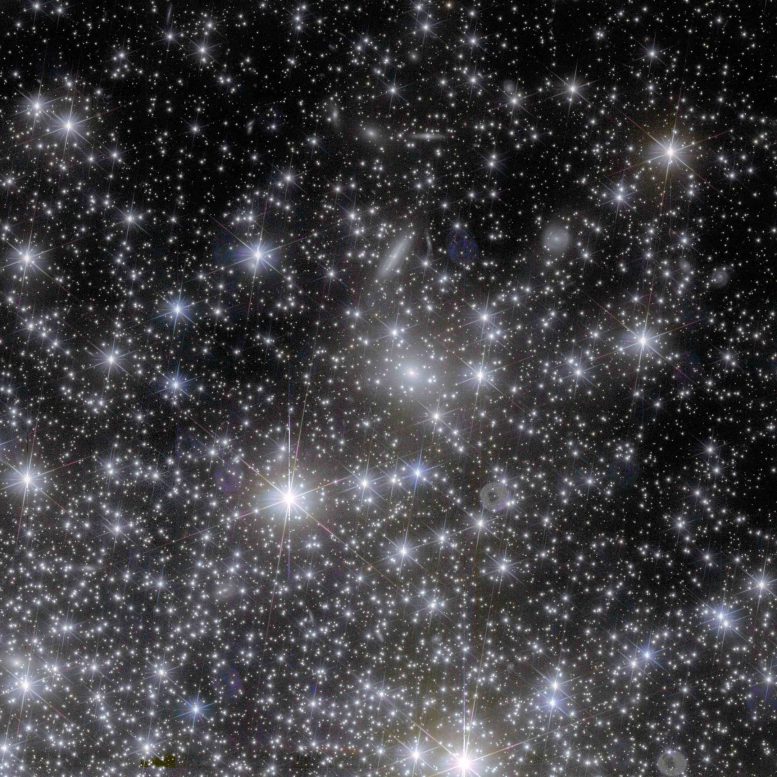
This cutout from Euclid’s full view of NGC 6397 is at the high resolution of the VIS instrument. This is nine times better than the definition of NISP that was selected for the full view; this was done for the practical reason of limiting the format of the full image to a manageable size for downloading. The cutout fully showcases the power of Euclid in obtaining extremely sharp images over a large region of the sky in one single pointing. Although this image represents only a small part of the entire color view, the same quality as shown here is available over the full field. Credit: ESA/Euclid/Euclid Consortium/NASA, image processing by J.-C. Cuillandre (CEA Paris-Saclay), G. Anselmi, CC BY-SA 3.0 IGO
“We expect all of the globular clusters in the Milky Way to have them, but so far we have only seen them around just a few,” says Davide. “If there are no tidal tails, then there could be a dark matter halo around the globular cluster, preventing the outer stars from escaping. But we don’t expect dark matter haloes around smaller-scale objects like globular clusters, only around bigger structures like dwarf galaxies or the Milky Way itself.”
A New Understanding of Stellar Evolution
If Davide and his team find tidal tails for NGC 6397 and other globular clusters in the Milky Way, that would allow them to very precisely calculate how the clusters orbit our galaxy. “And this will tell us how dark matter is distributed in the Milky Way,” Davide adds.
With Euclid’s observations, the team also wants to determine the age of globular clusters, to investigate the chemical properties of their stellar populations, and to study ultra-cool dwarf stars – the lowest mass members of the cluster.
See more of Euclid’s First Images.




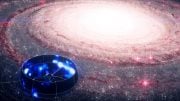



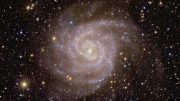
I think Globular clusters form in clouds of dark matter that have condensed into pools of liquid dark matter. These spheres would have much higher gravity much like galaxies in the early universe once the stars begin fusion they would vaporize the liquid dark matter which would reduce the dark matter ratio of liquid to gaseous dark matter to that of the surrounding dark matter or less.
How are you world new When and where did meteorites hit the surface of solar bodies?Where did Jupiter’s hydrogen gas come from?Why is there no hydrogen gas in Mercury, Venus, Earth and Mars, which are closer to the Sun than Jupiter?Why do the four major gas planets orbit in less than 24 hours and faster than Earth?Jupiter rotates at a speed of 45,000 km per hour, but the Earth rotates at a speed of nearly 1,700 km!?Why does Venus rotate clockwise, but all planets rotate counterclockwise?Why does Jupiter have 102 moons, but none of the 200 planets that American scientists found with the large James Webb telescope had moons in the arm of the galaxy?!Did 234 moons along with the planets of the solar system join the solar system from the Milky Way branch of the galaxy?Why is Islam in every land, there have been wars and ethnic conflicts, massacres and sedition and the backwardness of most Muslim countries for the religion of Islam?Was the most killing in Arabs because of their religion?Is it possible to travel to the stars inside a wormhole ring by centrifugal force?When all the material of galaxies collapses into a supermassive black hole, is there any energy left for the big bang?Text the answers to Dr. Mehrdad.Email does not work in the regime of the Islamic dictatorial republic.Dr. Mehrdad’s mobile number is 00989332197646 from Britain.
Why don’t foreigners value Iranian scientists?I made a great discovery in Earth science, astronomy, and the knowledge of the solar system, and I have spent more than forty years of my life studying life on earth, knowing the solar system, and researching the stars.I have submitted some of my articles related to the destruction of life on earth for this site, and I expect you to submit my articles on the sites.
Why Iran doesn’t give price to astronomers?I had the greatest discovery about the life of the earth and the knowledge of the solar system and the reason for the changes in this system.Please, if possible, put some of my articles on foreign sites because the Internet in Iran is heavily filtered.And we cannot share our opinions with big and famous sites.
All stars and all objects in space are the same age, this has been repeatedly shown with the James Webb T and before it was even made with endless astronomy articles with “impossible” and “mystery” or “unexplained” in the title, stop pretending the Bible isn’t true when your own bad science and attempts to refutes the Bible refutes you instead.
I have to listen to our young friend on an important matter. It is true that the age of materials and elements is the same, but the age of star formation at the end of space is not the same. The history of the substances that are in your body and my body cannot be calculated with the history of the substances that are in the space, and it cannot be said that God created them at a specific time because the time of the existence of the substances in the space. it can’t be It is fixed and no god is able to determine time in terms of creation. We mean that humans cannot justify that God created the stars at a specific time. It is very, very childish for a person to say that God created everything????!!! !! Doctor aghakasirimehrdad89darabad
Neo, you need to gain more experience so you don’t rush to judge. I admire your intelligence. I hope you will be successful and victorious in all stages of life. Put your real image in your IP instead of imaginary images.